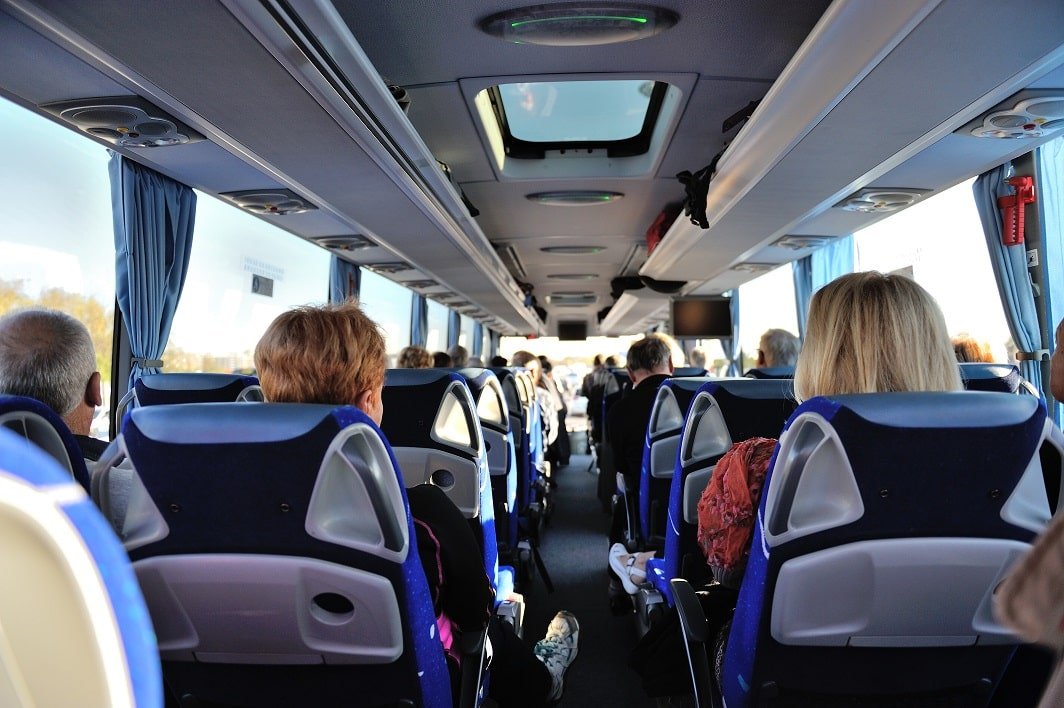20 Excellent Reasons For Choosing Event Transportation Sites
20 Excellent Reasons For Choosing Event Transportation Sites
Blog Article
Ten Top Tips For The Security And Safety Of Employee Shuttle Transport
Here are 10 safety guidelines for employee shuttles:
1. Regularly train drivers in safety
Every shuttle driver should undergo comprehensive safety training. This includes defensive driving techniques and emergency response protocols. Regular training refreshers will help drivers keep up-to-date regarding the best practices and increase their abilities to handle different scenarios.
2. Specific Vehicle Maintenance Protocols
Create a rigorous maintenance schedule for all shuttles to make sure they're operating properly. Regular inspections should include checking the brakes and tires and lighting and other essential systems. Properly maintaining vehicles reduces the risk of mechanical failures and also ensures the safety of passengers.
3. Use GPS tracking to enhance security
Install GPS tracking devices into shuttle vehicles to ensure that you can monitor their location in real-time. This technology improves security because it gives information on route deviations as well as idling time and unauthorised stoppages. Tracking helps authorities find vehicles in the event of an emergency while also protecting the passengers.
4. Establish Clear Emergency Procedures
Establish and clearly provide emergency procedures to drivers and passengers. This includes procedures for medical situations as well as accidents. It is possible to use drills to make sure that everyone is familiar with the procedures.
5. Ensure Adequate Insurance Coverage
Make sure that you have adequate insurance coverage for every shuttle operation. These policies should include collision insurance, liability coverage, and any other policies that are necessary to deal with the unique risks of employee transportation. Insurance coverage that is comprehensive will protect your organization and employees in the case of accidents.
6. Create Safety Policy for passengers
Create and communicate safety guidelines to shuttle passengers. Include guidelines for safety belts, safe conduct and emergency evacuation procedures. These policies should be displayed prominently on shuttles and platforms of the company to encourage the adherence of passengers and emphasize their importance.
7. Conduct background checks on the drivers.
Perform thorough background checks on every shuttle driver to ensure they have a clean driving history and do not have a criminal history. activity. This is an essential aspect in ensuring a safe workplace for employees. Records of drivers should be checked regularly to make sure they conform to safety standards.
8. Install safety features in vehicles
Make sure that shuttles are equipped with safety features like seat belts. airbags, anti-lock breaks and rearview cameras. These features decrease the likelihood of serious injury during an accident. To improve safety, invest in technologies such as collision avoidance systems.
9. Encourage Safety Culture
Through promoting safety for employees, you will help create a safety-focused culture. Encourage drivers and employees to prioritize safety by recognizing the efforts of others. Safety meetings and newsletters are an excellent method to keep safety at the forefront of your mind.
10. Monitor and analyse incidents and incident reports
Keep track of all incident reports such as accidents, near misses as well as safety violations. Through analyzing the data you will discover patterns and areas that require improvement. Make use of the insights from these reports to modify the training, policies or procedures to increase overall security and safety.
By implementing these tips, organizations can create a safe and secure environment for their employee shuttle services, which will ensure the safety of the passengers while minimising the risks involved with transportation. Security and safety is a top priority. It not only helps safeguard employees, but can also improve the overall satisfaction of shuttle services. Take a look at the top employee transportation advice for site info including atlanta airport transportation, private transportation services, shuttle to airport near me, airport shuttle pickup at home, san francisco airport shuttle service to hotels, car service to airport, shuttle to lax, sfo airport transportation, airport shuttle bus, lax airport shuttle bus and more.
Top 10 Ways On How To Budget And Calculate The Cost Of A Company's Transportation Service
Here are 10 great ideas for cost and budget aspects for corporate events. transportation services:
1. Perform a comprehensive Analysis of Costs
Start by conducting a detailed cost analysis of all elements of your transportation services. This includes rental or leasing costs as well fuel expenses, salaries of drivers and maintenance, insurances, and other fees. Knowing the total cost can assist in establishing an estimate of costs.
2. Budget Clarity
Set up a budget structure that specifies how much your business is prepared to allocate for transportation. The framework must take into account all identified expenses, and also allow for flexibility to account for any unexpected expenses. Setting up a budget will aid you in making better decisions and keep your expenses for transportation under control.
3. Explore Alternative Transportation Options
Examine the options for transportation including vans or shuttles. Consider factors such as comfort, capacity and convenience when evaluating the costs of each transportation choice. Selecting the best option that will meet the needs of guests will allow you to maximize the cost of transportation.
4. Negotiate contracts with transportation providers
You can negotiate the contract to ensure you receive the most competitive price. Many companies offer discounts when booking in large quantities or to host corporate events. A good relationship with your transportation providers will lead to lower rates and a better experience. This is ultimately beneficial to your budget.
5. Plan for the Cost of Fuel
Fuel costs are a major aspect of the transportation costs. Calculate the number of trips you will need to make and the distance needed to reach the event. To reduce costs you should try negotiating with the transport company who uses efficient vehicles that use less fuel.
6. Include Contingency Funds
A portion of the budget for contingency funds to pay for the unexpected expenses. Transport can be unpredictable with possible issues such as vehicle breakdowns or additional trips needed. The contingency fund ensures the situation can be dealt with without compromising quality or causing overspending.
7. Take into consideration Group Discounts and Packages
You can save money by searching for discounts or specials offered by transport providers. Numerous companies offer reduced rates for large groups or corporate events that can lead to significant savings. If you are interested in discounted packages, inquire about additional services such as on-site coordination as well as additional vehicles.
8. Keep track of your expenses and monitor them
Maintain a close watch on all transportation-related expenses throughout the planning and execution phases. The tracking of costs in real-time is possible using budgeting tools, spreadsheets, or other software. The monitoring of expenses will help you identify areas that could be cut and help keep the budget in line.
9. Get feedback to improve Budgeting
Following the meeting, gather feedback from the attendees about their experiences with transportation. Also, inquire about any costs that may be incurred. The analysis of this feedback will provide information about the effectiveness of the transportation service and help you make future budgeting decisions. Knowing what is working and what doesn't make a difference in the budget for your event.
10. Determine the total cost of ownership
If you are considering options for transportation look at the total cost of ownership (TCO) for the vehicle. It is not just the initial purchase or rental cost, but also the ongoing costs like maintenance, insurance, and depreciation. Understanding TCO is important for making educated decisions that will help you to balance the initial cost with long-term financial implications.
The following tips can assist organizations to manage costs effectively and make informed decisions about budgets for corporate event transportation services. A well-planned budget guarantees that the transportation requirements are addressed, but also contributes to the overall successful event, allowing attendees to focus on the experience rather than issues with logistics. Effective budgeting and cost-management enhances the image of the company and shows a commitment to efficiency. Check out the top rated event transportation tips for site examples including global logistics, service transportation company, companies in logistics, vehicle for transportation, transport mgmt, transportation services, globe transport, pace transportation, pace transportation service, logistics near me and more.